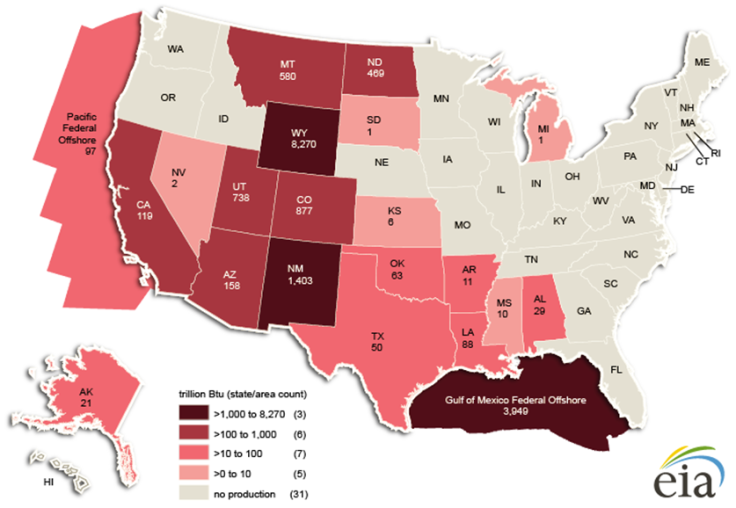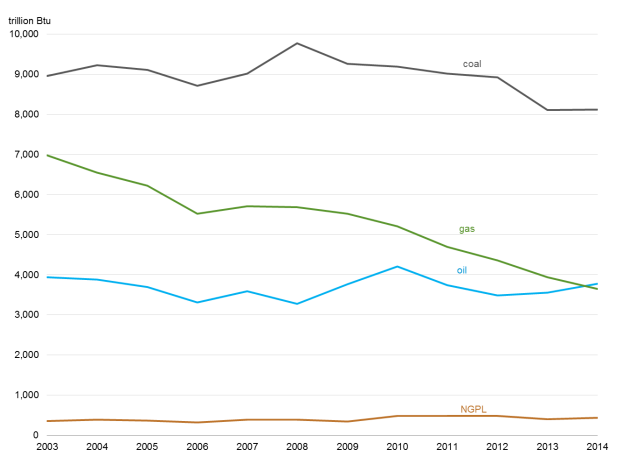US Election 2016: Democratic Proposals To Ban Drilling On Federal Lands Would Hamper US Oil Output

The U.S. could hit record levels of oil production in the next five years, but whether that happens might depend on who wins the White House this fall.
Hillary Clinton and Bernie Sanders, the Democratic presidential contenders, have both vowed to end fossil fuel development on federal lands to combat climate change. A ban on new oil and gas leases would eliminate substantial future U.S. oil supplies and reverse the country’s rise as one of the largest energy producers in the world, critics said.
The International Energy Agency said Monday that U.S. oil production is projected to reach 14.2 million barrels a day by 2021, up from 9.4 million barrels a day in 2015, making the nation the No. 1 source of non-OPEC supply growth over that period. While U.S. output is expected to decline this year and next — the result of plunging oil prices and shrinking exploration budgets – the industry will soon rebound thanks to cost-cutting measures, more efficient drilling and rising oil prices, the Paris-based agency said.
Yet halting new oil production on U.S. federal lands would diminish those gains and deepen ongoing declines in production, said Colin Fenton, a fellow at Columbia University’s Center on Global Energy Policy and an energy researcher in Boston. The policy could remove some 2.1 million barrels a day of U.S. crude oil liquids output, worth about 18 percent of total U.S. oil production, he said, citing U.S. Energy Information Administration data.

“If you get the outcome of a Democratic president, you might find that U.S. public policy results in an even larger production cut,” Fenton added.
Clinton this month expressed support for ending future fossil fuel extraction on federal lands. When an environmental activist asked if she backed the ban, she replied, “Yeah, that’s a done deal,” according to a video by green group 350 Action posted Feb. 4.
Jesse Ferguson, Clinton’s campaign spokesman, did not return a request for comment by deadline. In response to the video, Ferguson recently told The Hill that Clinton believes the U.S. should be “on a long-term path to a future where there is no extraction of fossil fuels on public lands.”
Sanders has been an even louder champion of the policy. In November, he co-sponsored legislation to stop issuing new leases to extract oil, coal or natural gas on public land. The Keep it in the Ground Act would prevent companies from accessing new onshore reserves as well as parcels in the Gulf of Mexico, Atlantic, Pacific and Arctic oceans.
“It’s imperative that we not just talk the talk, but walk the walk, that the United States lead the world in combating climate change,” Sanders said in a video distributed by his presidential campaign. A spokesperson for Sanders did not respond to a request for comment.

The Obama administration itself is considering overhauling the federal lease program. The U.S. Interior Department in December postponed an oil and gas lease auction that month until March 17 after environmental groups protested the event, which coincided with the final days of the United Nations climate change talks in Paris. In January, the agency announced a halt to new coal mining leases on public lands.
President Barack Obama hinted at the overhaul in his Jan. 13 State of the Union address when he said, “I’m going to push to change the way we manage our oil and coal resources so that they better reflect the costs they impose on taxpayers and our planet.”
Republican candidates in the 2016 presidential race have not voiced support for dismantling the program or other climate-focused policies. GOP front-runners Donald Trump, Ted Cruz and Marco Rubio have expressed skepticism — or outright denial — that humans are to blame for the surge in greenhouse gas emissions, which scientists say are causing global warming. All three have called for an aggressive expansion of U.S. energy development.
America’s federal lands contain an estimated 5.3 billion barrels in onshore proved oil reserves, plus another 4.3 billion barrels in offshore reserves, nearly all of which are in the Gulf of Mexico. The federal reserves account for about 26 percent of total U.S. oil reserves, which total an estimated 36.5 billion barrels, the U.S. Energy Information Administration said.

In 2014, energy companies held over 23,000 producing oil and gas leases on federal land, which together supplied 21.4 percent of total U.S. oil production that year and 14 percent of natural gas production, according to the latest EIA data.
Proponents of drilling for oil and gas on federal lands point to the generous income it provides U.S. taxpayers. In fiscal year 2015, drilling and mining activities generated more than $9.6 billion in revenues — including royalties and rent — for the government, the Bureau of Land Management’s Office of Natural Resources Revenue reported. Oil and gas leases accounted for most of that sum, included around $5.6 billion in reported royalties.
“Royalties, taxes and fees from federal land oil and gas production are among the largest contributors to the federal Treasury,” said Jeff Eshelman, a spokesman for the Independent Petroleum Association of America, a major industry group. The leases “are a major reason why the United States has become a global leader in energy production,” he added.
EIA analysts have not studied the potential effects of a ban on future fossil fuel production on public lands, said agency spokesman Jonathan Cogan. The EIA’s projections similarly do not separate output on federal lands from output on private lands, he said, although the agency’s latest outlook suggests output from the Gulf of Mexico will rise in the next couple of years as major projects come online.
The International Energy Agency didn’t factor a federal land ban into Monday’s medium-term oil market report, which saw U.S. crude output reaching all-time highs. Analysts also saw growing output from the Gulf of Mexico by 2021, but that uptick hinges “on whether new projects are sanctioned in time,” according to the report.
© Copyright IBTimes 2024. All rights reserved.




















